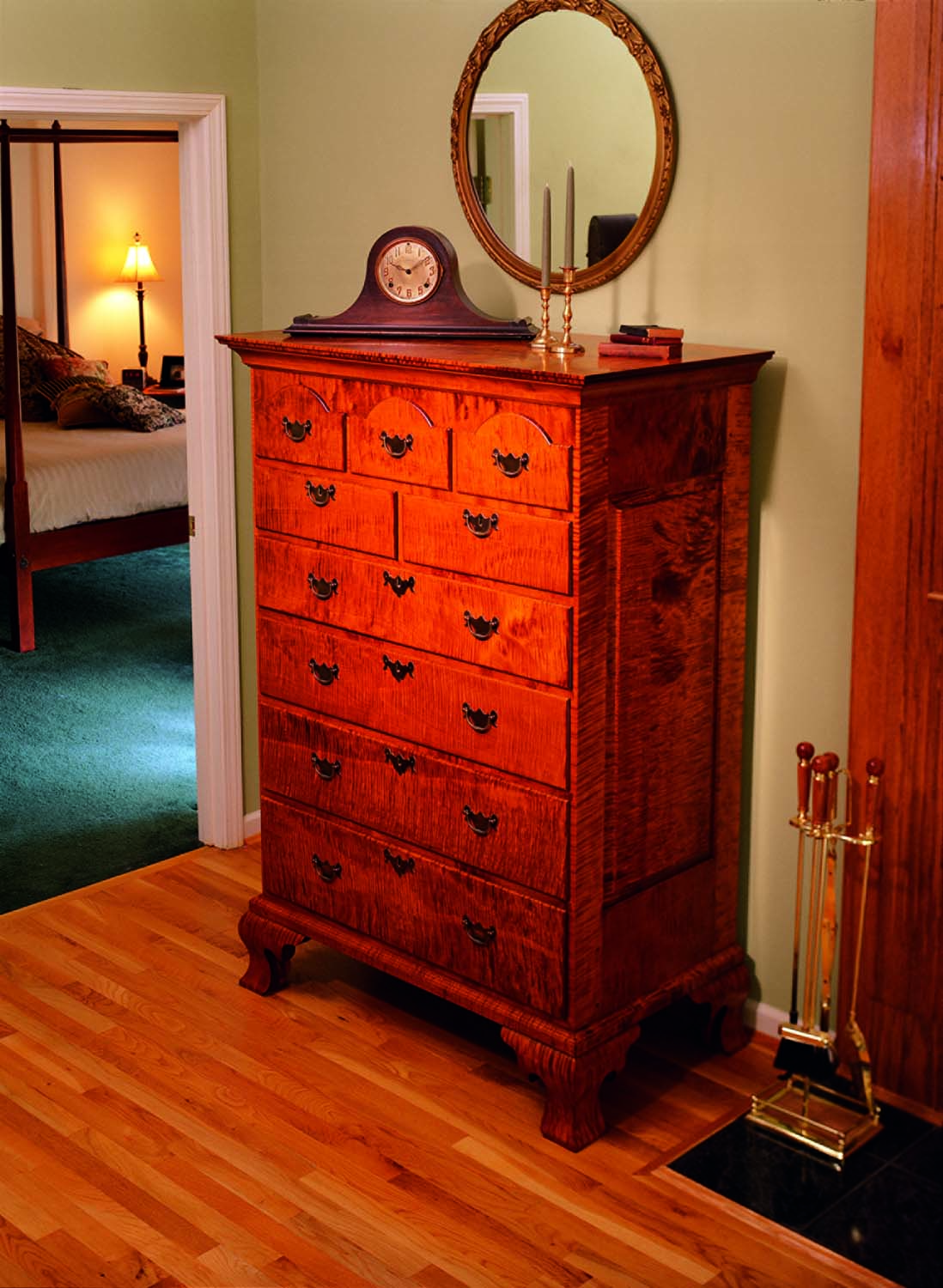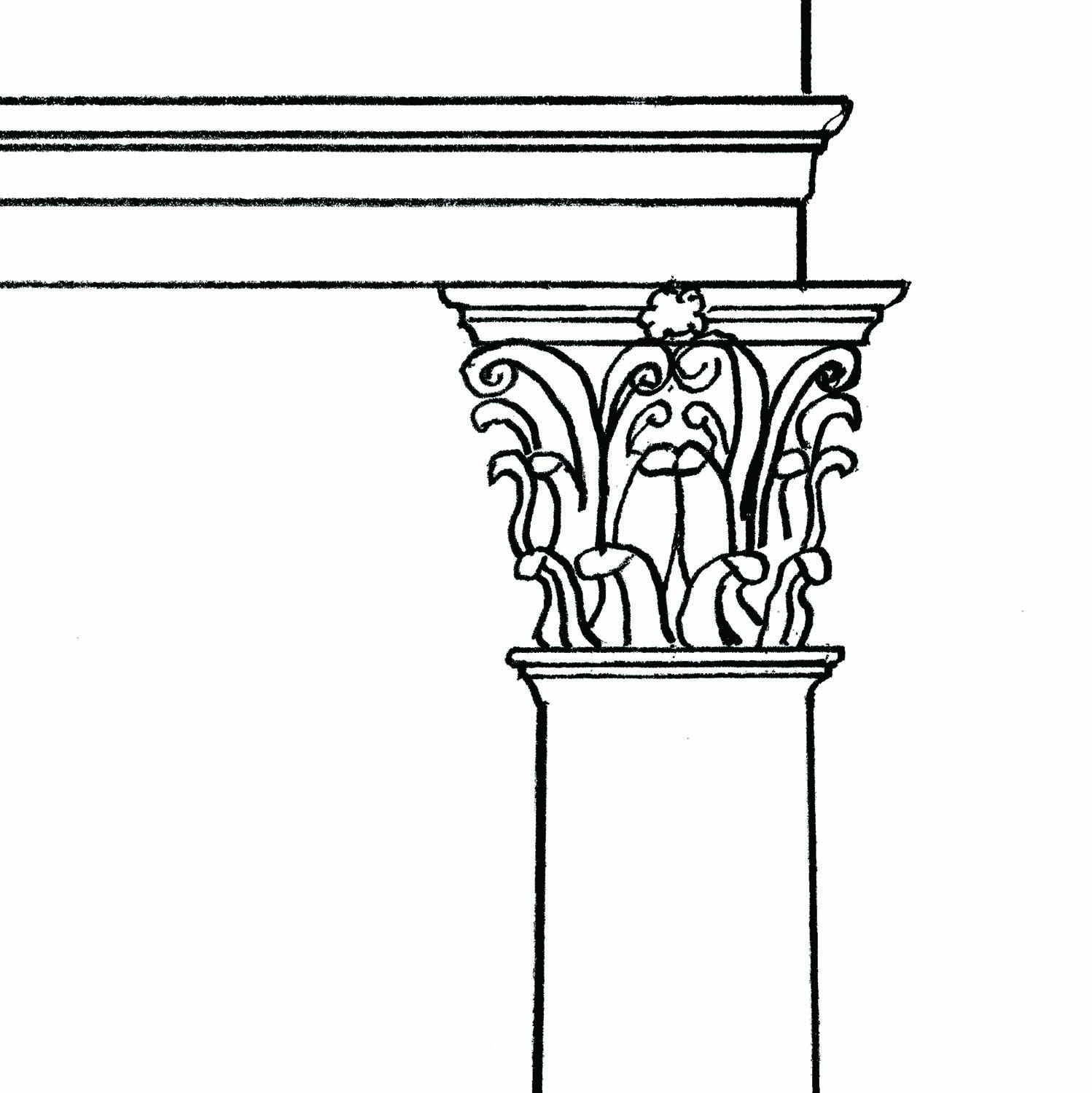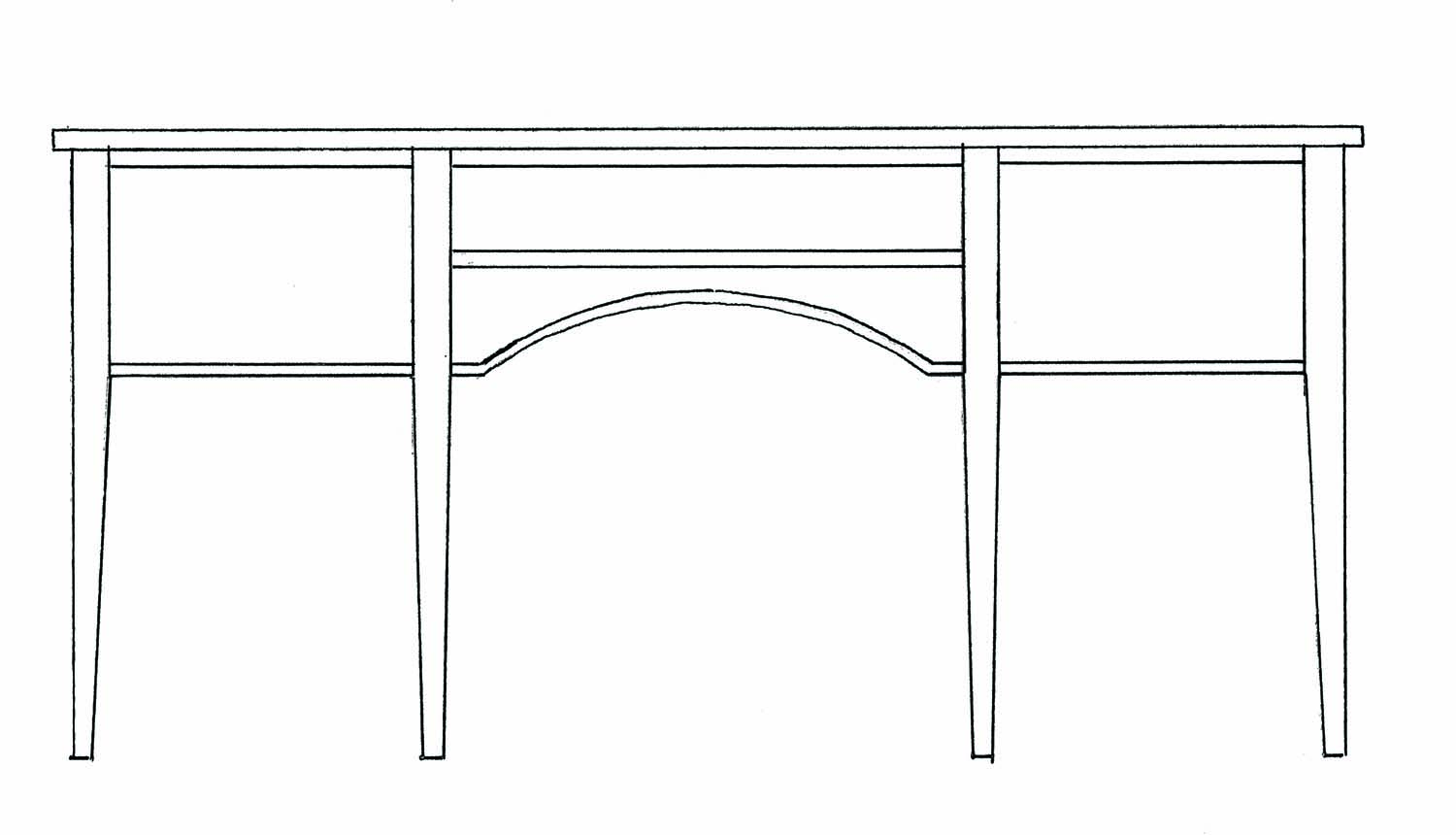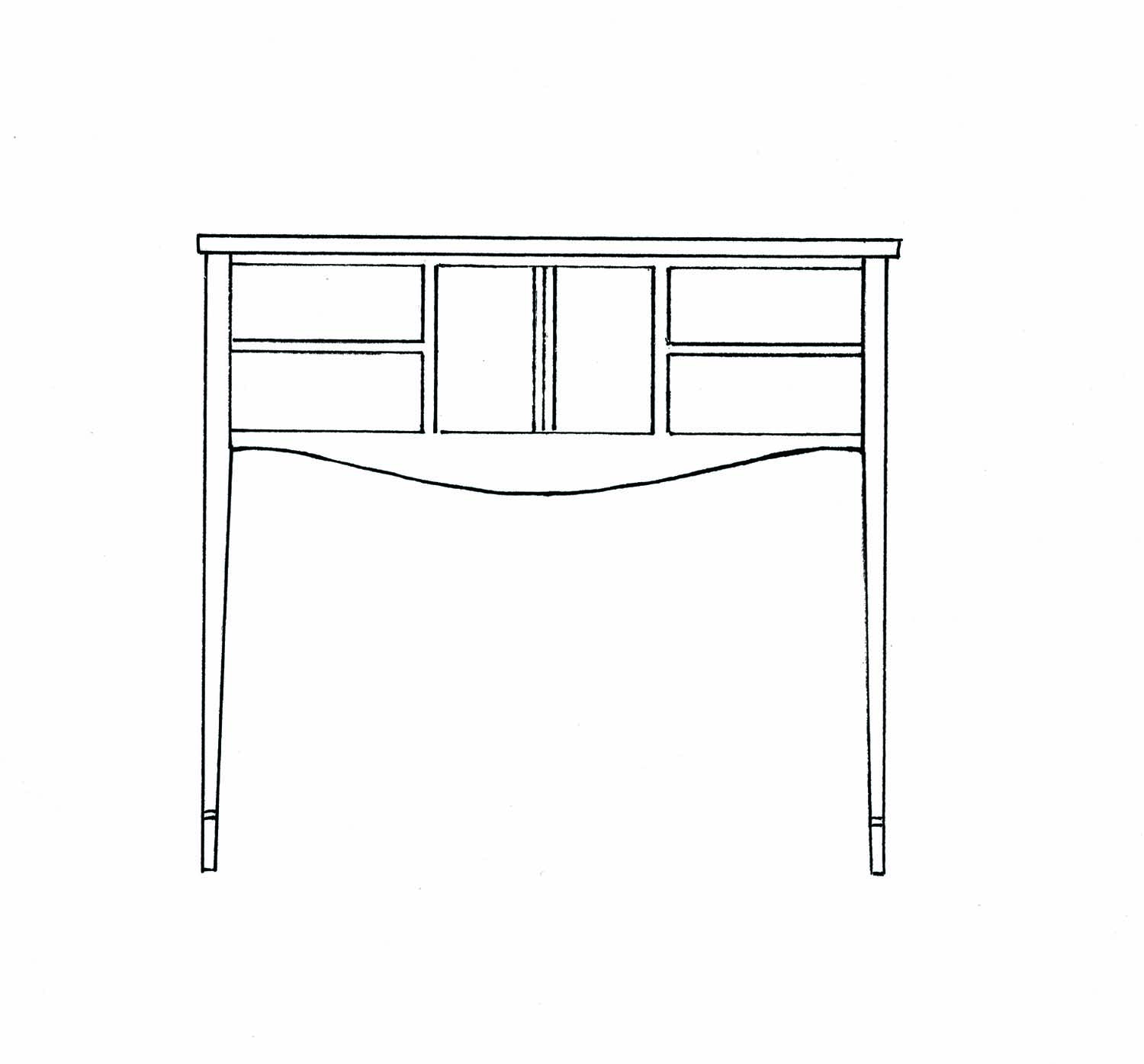We may receive a commission when you use our affiliate links. However, this does not impact our recommendations.

Eye-catching. The form of a piece is what usually captures your attention from across a room.
Early 20th-century filmmakers used time-lapse photography to dazzle audiences with never-before-seen images of flowers emerging and bursting into bloom. Critics with Victorian sensibilities objected that something so intimate should best be left hidden. Sometimes a well-designed piece of furniture can feel like it holds on to its secrets. We sense there are many hidden design lessons if we could only see them. A good place to start is to learn how to recognize and visualize forms.

Corinthian capital. A few simple shapes combine to create this icon of Western design.
A form is a combination of simple shapes that together make up a composition. A form is what catches your eye from a distance; it’s the “bones,” or what some refer to as the “lines of a piece.” When I study a design I start by looking at it from across the room and take in the overall form. A Corinthian capital is a form. Underneath all those leaves and volutes is a simple vase shape, or you might imagine it as an inverted bell. Can you visualize that simple shape underneath all those leaves? Ancient legend holds that the form is inspired by a basket left at a graveside. An acanthus plant grew up around the basket providing the germ of an idea for this form.
Simple Shapes as Building Blocks

Simple elegance. This elegant form (a Baltimore sideboard) is a combination of simple shapes.
Many furniture forms are based on simple squares, circles, rectangles or, by extension, ovals. Those simple shapes become a form when divided up and organized into useful or decorative parts such as doors, drawers or open spaces. A square can be extended horizontally or vertically to produce an infinite number of possible rectangles. However, artisans tend to favor a small handful of simple rectangles based on whole-number ratios. The graphic atop the next page shows the most common shapes. In the center is a square with a ratio of 1:1. Flanking it on both sides are rectangles with a ratio of 4:5. They continue marching out to the ends where we have 2:1 rectangles.
This little handful of simple rectangles found favor for several reasons. First, the simple ratios were thought to be linked to the ideal human form and music. For millennia, artists and sculptors used simple whole-number
ratios to proportion the human figure. Additionally, they are user-friendly and lend themselves to simple tools such as dividers, and require little or no math. Best of all, they are easy to visualize in your mind. A rectangle with a ratio of 1:2 is two squares; a rectangle with a ratio of 2:3 is a square and a half square. All these simple whole-number rectangles can be expressed in simple multiples or divisions of squares. Just close your eyes and try to visualize a rectangle made up of two squares. Can you picture it?

Symmetrical rectangles. Each rectangle has a twin on the opposite side of the square.
Many tall cabinets such as chests on chests, bookcases and highboys are built around a rectangle with a 1:2 vertical ratio. At the other end of the spectrum are long pieces such as sideboards, which often are built around a 1:2 horizontal rectangle. In between, you find desks, chests, dressers and even small document boxes composed out of simple rectangle ratios such as 2:3, 4:5, 3:5. This does not mean that all this work is confined to rigid, straight shapes. Overtop this skeleton you have many possibilities just as with that Corinthian capital. A simple shape can be the basis for a powerful creative form. Another advantage these simple shapes offer is a way to adapt a furniture design to your needs.
Practical Application
Many of the original sideboard designs are from the Federal era (circa 1790-1810) and are quite massive. Often the form is built around a 2:1 rectangle that is approximately 40″ tall and 80″ long. It’s a comfortable height at which to set down a large, heavy tray of piping-hot food straight from the kitchen.
The drawing above is a typical example of the form, a piece made in Baltimore around 1810. You can see readily that the large 2:1 rectangle is subdivided into smaller rectangles, with a square in the center section.

Elegance writ small. This smaller version of a sideboard also is composed of simple shapes.
But what if we don’t have room or wall space for such a large piece? The smaller drawing above is a rough sketch I drew for a small sideboard based around a single square. To the untrained eye the square shape is not apparent because it’s broken up by the open space below and the case above. Perhaps we want something in between these two. Just retain the height, but rough in a rectangle that’s 2:3 or 3:5. This offers a good starting point to begin sketching in doors, drawers, etc.
Some may feel limited at the thought of building around a small number of simple shapes. It may help to think of them as primary shapes just like we have primary colors. Instead of restricting our creativity, they offer a framework to begin building upon. Once the form is roughed in we can add curvature to the case front or top. We also can change up the legs and frames making them organic, curved, turned or carved. Still, from across the room it will have those solid bones – a form that captures our eye and makes us want to step over for a closer look.

Natural inspiration. Forms can be seen in the unfolding springtime blossoms of the bluet.
Make it a practice when looking at furniture to visualize the simple shapes that make up the form. Try to pick out not only the overall shape that defines the envelope but also the smaller shapes that work together to make up the bones of the design. You’ll be pleasantly surprised to see that the masterpiece you’ve admired can open up like a spring wildflower before your eyes.
Here are some supplies and tools we find essential in our everyday work around the shop. We may receive a commission from sales referred by our links; however, we have carefully selected these products for their usefulness and quality.








